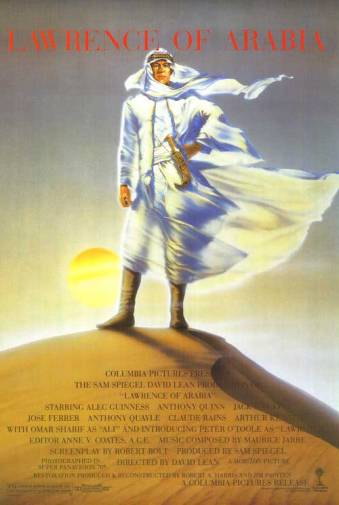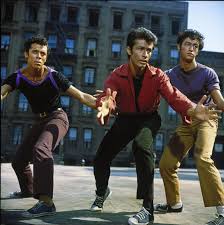
For a decade of creativity, the 60s had some dopey movie posters, frankly. Also, I’m not really sure Oliver! was more than a musical.
– For your talent is employable, so make your life enjoyable. A world with pockets open wide awaits your whim to grope inside. – Fagin discusses career options, Oliver!
Oliver! fits squarely in the mold of the 1960s Best Picture – British, musical, period piece with lavish costumes, sets and production numbers. The movie freely focuses on style over substance, and despite a thin plot (especially compared to the Dickins book on which it’s based), the lavish and fun song and dance numbers make this one of my favorite musicals, both among Best Pictures and all movies.

Jack Wild as the Artful Dodger and Mark Lester as the tastefully dirty Oliver. Wild was nominated for Best Supporting Actor, but I’m fairly certain the Academy meant to nominate his dope hat.
Based loosely on Charles Dickens novel and, more directly, a Broadway musical, Oliver! is about a poor workhouse orphan (Mark Lester) in 19th century England. After Oliver dares asks for more gruel for dinner, the workhouse owner sells him to an undertaker to lead funeral processions. Oliver runs away and is taken in by an army of boy pickpockets, led by the adult Fagin (Ron Moody) and lead boy, the Artful Dodger (Jack Wild). Fagan is also a fence for the dastardly thief Bill Sykes (Oliver Reed), who lives with the kind-hearted bar-maid, Nancy (Shani Wallis). Oliver, who is oblivious to what it is that pickpockets actually do, is taken by Dodger on a training run but ends up captured by rich Mr. Brownlow, who taken by the boy’s charm and innocence, takes Oliver in. Fagin and Sykes are concerned Oliver will rat out their criminal enterprise and conspire to kidnap him back under the “Snitches get stitches” doctrine.

Fagin (Ron Moody, center) holds career day in “You’ve Got to Pick a Pocket or Two.” The parasol was never not a hot commodity.
There were a lot of things I liked about Oliver! I thought that the music was great throughout. The movie has a lot of famous, recognizable songs, such as “Food Glorious Food” and “Consider Yourself”. Most of the production numbers, especially “Consider Yourself”, are grandly shot and sprawling through entire London neighborhoods with hundreds of singers and dancers. The smaller numbers, mainly “You’ve Got to Pick a Pocket or Two” and “Reviewing the Situation”, both sung by Fagin, have intricate choreography and are also very catchy.
The story itself is kind of flimsy. Oliver, despite being the title character, feels like a supporting player (and a very dumb one at that). He disappears for long sections of the movie that focus more on Nancy, Bill and Fagin. Even most of the musical numbers he’s in find him more of an on-looker who we cut to occasionally to see his dumb-struck reactions while Dodger, Fagin and others perform. The movie really downplays the relationship between Oliver and Brownlow, which is weird considering it’s the basis of Oliver’s redemption and ultimately the movie’s happy ending. Much more time is given to the resolution of Fagin’s story – he gets a whole song to spell out his future while Oliver has 30 wordless seconds at the very end.

Despite Bill Sykes (Oliver Reed’s) sweet muttonchops, Oliver! did not win best makeup and hair styling (possibly because the Award wasn’t created until 1981).
The movie has a very strange shift in tone between its first and second parts. The first part is very light and fun. Fagin seems more like a kooky eccentric than any kind of real danger, and seems to show real affection for his pickpocket brigade (I suppose one could argue this is just Oliver’s naive interpretation of his master). Sykes comes off as a gruff rogue who doesn’t say much but doesn’t seem like a truly bad guy (apart from the thieving). However, things take a very dark turn in the second half with Sykes suddenly becoming a homicidal maniac and a very real, very blood death changes everything towards the end of the movie. I was really shocked by the death and violence at the end of the movie because it was totally opposite the tone and characterizations presented in the first half (and which belies the movie’s G rating!).
Oliver! is my favorite of the eight Hollywood Musicals to win Best Picture. I really enjoyed the songs and production numbers and despite the two-and-a-half-hour run time, the movie didn’t drag for me like My Fair Lady. This is the end of an era for both musicals and Best Pictures, symbolized by the movie’s own dark turn towards its finale. Another musical wouldn’t win Best Picture until 2002 and the awards themselves began to favor darker, more adult movies in the coming years.
Other Oscars: Best Director (Carol Reed); Best Music, Score of a Musical Picture; Best Art Direction; Best Sound
Box Office: $37.4 Million (7th for the year)
Other Notable Films of 1968: 2001: A Space Odyssey$; Charly; Funny Girl*; The Love Bug; The Odd Couple; Bullit; Rosemary’s Baby; Planet of the Apes; Night of the Living Dead; The Lion in Winter*; Rachel, Rachel*; Romeo and Juliet*; Yellow Submarine
*Best Picture Nominee
$Highest Grossing Movie: $56.7 Million







